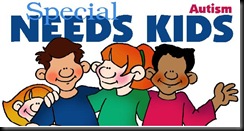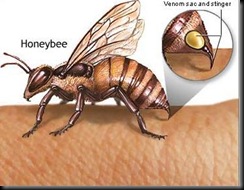Autism, also called infantile autism or autistic disorder, is a lifelong disorder that causes abnormal neurological development. Autism is usually diagnosed by the age of 3.
Autism causes impaired social interaction, communication difficulties, and restricted or repetitive activities and interests. People with autism often exhibit abnormal responses to sensory stimulation (e.g., touch, sound, light), usually have moderate mental retardation, and have a higher risk for developing epilepsy. Some autistic patients exhibit aggression and self-injurious behavior (e.g., head banging, biting themselves).
About one-third of patients with autism have normal or nearly normal intelligence quotients (IQs). Many are able to display emotion and affection and respond to their environment. Terms used to describe patients with the disorder include autistic-like, autistic tendencies, autism spectrum, and high-functioning or low-functioning autism.
High-functioning patients may have minor delays in language and development and difficulty with social interactions. They may have problems initiating and maintaining conversation and efforts may be described as "talking at others" (e.g., may talk incessantly about a favorite subject despite attempts by others to speak).
Incidence and Prevalence:
Autism affects 1 to 2 out of every 1000 people and as many as 1.5 million adults and children in the United States have some form of the disorder. The overall incidence increases by about 10–17% each year. The disorder occurs about 4 times more often in boys.
Causes:
The cause of autism is unknown. The disorder results from abnormalities in brain structure or function and the underlying cause usually cannot be identified. Patients with autism often have abnormalities in several areas of the brain. This may indicate that a disruption in fetal brain development contributes to the disorder.
Brain abnormalities may result from genetic (hereditary) or environmental (e.g., exposure to toxins) factors, metabolic disorders (e.g., serotonin deficiency), viral infections (e.g., German measles), or complications during pregnancy and delivery.
A single gene for autism has not been identified, but a group of unstable genes may trigger the disorder in some patients. According to a recent study, approximately 11% of autism cases may have a genetic component.
The measles-mumps-rubella vaccine (MMR) may contribute to autism in some cases; however, this potential link is controversial. More research is necessary to evaluate this possible link.
Medical conditions associated with an increased risk for autism include the following:
- Fragile X syndrome (more common in males; may cause mental retardation)
- Tuberous sclerosis (syndrome that causes seizures, mental disorders, and tumors)
- Congenital rubella syndrome (results from transmission of the rubella virus [causes German measles] in utero)
- Untreated phenylketonuria (PKU; hereditary disease caused by a defective enzyme.
Symptoms:
Children with autism generally have problems in three crucial areas of development — social interaction, language and behavior. But because the symptoms of autism vary greatly, two children with the same diagnosis may act quite differently and have strikingly different skills. In most cases, though, the most severe autism is marked by a complete inability to communicate or interact with other people.
Many children show signs of autism in early infancy. Other children may develop normally for the first few months or years of life but then suddenly become withdrawn, aggressive or lose language skills they've already acquired. Though each child with autism is likely to have a unique pattern of behavior, these characteristics are common signs of the disorder:
Social skills
- Fails to respond to his or her name
- Has poor eye contact
- Appears not to hear you at times
- Resists cuddling and holding
- Appears unaware of others' feelings
- Seems to prefer playing alone — retreats into his or her "own world"
Language
- Starts talking later than other children
- Loses previously acquired ability to say words or sentences
- Does not make eye contact when making requests
- Speaks with an abnormal tone or rhythm — may use a singsong voice or robot-like speech
- Can't start a conversation or keep one going
- May repeat words or phrases verbatim, but doesn't understand how to use them
Behavior
- Performs repetitive movements, such as rocking, spinning or hand-flapping
- Develops specific routines or rituals
- Becomes disturbed at the slightest change in routines or rituals
- Moves constantly
- May be fascinated by parts of an object, such as the spinning wheels of a toy car
- May be unusually sensitive to light, sound and touch and yet oblivious to pain
Young children with autism also have a hard time sharing experiences with others. When read to, for example, they're unlikely to point at pictures in the book. This early-developing social skill is crucial to later language and social development.
As they mature, some children with autism become more engaged with others and show less marked disturbances in behavior. Some, usually those with the least severe problems, eventually may lead normal or near-normal lives. Others, however, continue to have great difficulty with language or social skills, and the adolescent years can mean a worsening of behavior problems.
The majority of children with autism are slow to acquire new knowledge or skills and some have signs of lower than normal intelligence. Other children with autism have normal to high intelligence. These children learn quickly yet have trouble communicating, applying what they know in everyday life and adjusting in social situations. An extremely small number of children with autism are "autistic savants" and have exceptional skills in a specific area, such as art, math or music.
Diagnosis
Diagnosis of autism is usually made by the age of 3. Early diagnosis and treatment often helps to improve outcome for patients. Diagnosis includes the following:
- Physical examination (may include neurological examination)
- Medical history (includes family history, birth history, and early development)
- Medical tests (to rule out other conditions)
Physicians use various screening tools to evaluate development, communication and language skills, and interaction with others. They usually question caregivers about the child's development (e.g., Did the child babble, point, wave, and grasp objects by 12 months of age?) and observe the child closely during office visits.
Treatment:
No cure exists for autism, and there is no "one-size-fits-all" treatment. In fact, the range of home-based and school-based treatments and interventions for autism can be overwhelming.
Your doctor can help identify resources in your area that may work for your child. Treatment options may include:
- Behavior and communication therapies: Many programs have been developed to address the range of social, language and behavioral difficulties associated with autism. Some programs focus on reducing problem behaviors and teaching new skills. Other programs focus on teaching children how to act in social situations or how to communicate better with other people. Though children don't outgrow autism, they may learn to function well with the disorder.
- Educational therapies: Children with autism often respond well to highly structured education programs. Successful programs often include a team of specialists and a variety of activities to improve social skills, communication and behavior. Preschool children who receive intensive, individualized behavioral interventions show good progress.
- Drug therapies: No medication can improve the core signs of autism, but certain medications can help control symptoms. Antidepressants may be prescribed for anxiety, for example, and antipsychotic drugs are sometimes used to treat severe behavioral problems.
Because autism is a devastating and so far incurable disease, many parents seek out alternative therapies. Though some families have reported good results with special diets and other complementary approaches, studies have not been able to confirm or deny the usefulness of these treatments. Some of the most common alternative therapies include:
- Creative therapies. Some parents choose to supplement educational and medical intervention with art therapy, music therapy or sensory integration, which focuses on reducing a child's sensitivity to touch or sound.
- Special diets. Several diet strategies have been suggested as possible treatments for autism, including restriction of food allergens; probiotics; a yeast-free diet; a gluten-free, casein-free diet; and dietary supplements such as vitamin A, vitamin C, vitamin B6 and magnesium, folic acid, vitamin B12 and omega-3 fatty acids. The diet that has been tried most extensively — and with the greatest anecdotal success — eliminates gluten — a protein found in most grains, including wheat — and casein (a milk protein). To learn more, talk to a registered dietitian with special expertise in autism.
- Chelation therapy. This treatment, which is recommended by some doctors and parents, is said to remove mercury from the body. But no studies have shown a link between mercury and autism, and chelation has not been shown to be a safe or effective treatment.
Coping and support
Raising a child with autism can be physically exhausting and emotionally draining. These ideas may help:
- Find a team of trusted professionals. You'll need to make important decisions about your child's education and treatment. Find a team of teachers and therapists who can help evaluate the options in your area and explain the federal regulations regarding children with disabilities. Make certain this team includes a case manager or service coordinator, who can help access financial services and government programs.
- Take time for yourself and other family members. Caring for a child with autism can be a round-the-clock job that puts stress on your marriage and your whole family. To avoid burnout, take time out to relax, exercise or enjoy your favorite activities. Try to schedule one-on-one time with your other children and plan date nights with your spouse — even if it's just watching a movie together after the children go to bed.
- Seek out other families of autistic children. Other families struggling with the challenges of autism can be a source of useful advice. Many communities have support groups for parents and siblings of children with autism.
- Learn about the disorder. There are many myths and misconceptions about autism. Learning the truth can help you better understand your child and his or her attempts to communicate. With time, you'll likely be rewarded by seeing your child grow and learn and even show affection — in his or her own way.
Source: Tv, Internet



